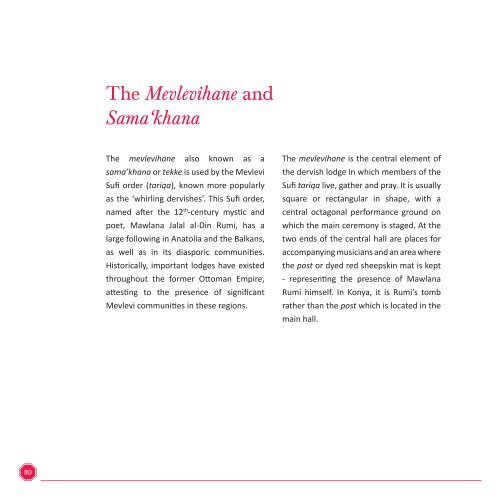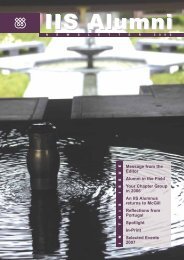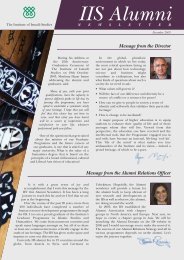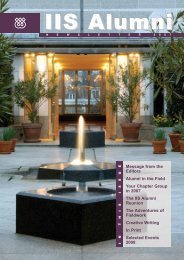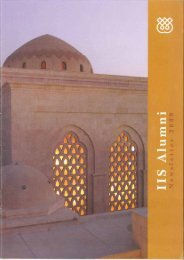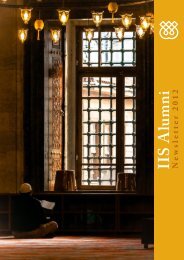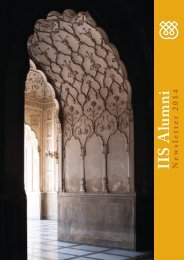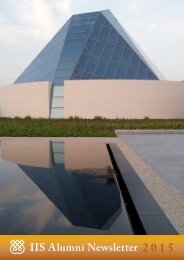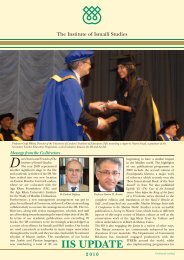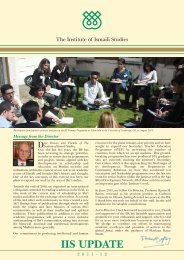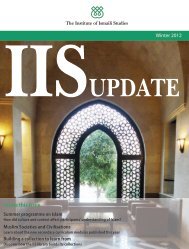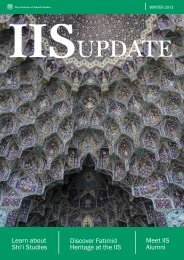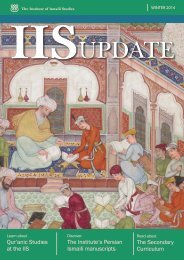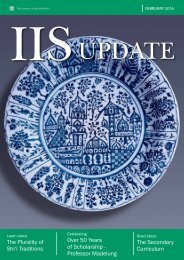Create successful ePaper yourself
Turn your PDF publications into a flip-book with our unique Google optimized e-Paper software.
Whirling dervishes at Galata Mevlevihanesi.<br />
Credit: istanbul.com.<br />
The Mevlevihane <strong>and</strong><br />
Sama‘khana<br />
The mevlevihane also known as a<br />
sama’khana or tekke is used by the Mevlevi<br />
Sufi order (tariqa), known more popularly<br />
as the ‘whirling dervishes’. This Sufi order,<br />
named after the 12 th -century mystic <strong>and</strong><br />
poet, Mawlana Jalal al-Din Rumi, has a<br />
large following in Anatolia <strong>and</strong> the Balkans,<br />
as well as in its diasporic communities.<br />
Historically, important lodges have existed<br />
throughout the former Ottoman Empire,<br />
attesting to the presence <strong>of</strong> significant<br />
Mevlevi communities in these regions.<br />
The mevlevihane is the central element <strong>of</strong><br />
the dervish lodge in which members <strong>of</strong> the<br />
Sufi tariqa live, gather <strong>and</strong> pray. It is usually<br />
square or rectangular in shape, with a<br />
central octagonal performance ground on<br />
which the main ceremony is staged. At the<br />
two ends <strong>of</strong> the central hall are places for<br />
accompanying musicians <strong>and</strong> an area where<br />
the post or dyed red sheepskin mat is kept<br />
- representing the presence <strong>of</strong> Mawlana<br />
Rumi himself. In Konya, it is Rumi’s tomb<br />
rather than the post which is located in the<br />
main hall.<br />
80 81


